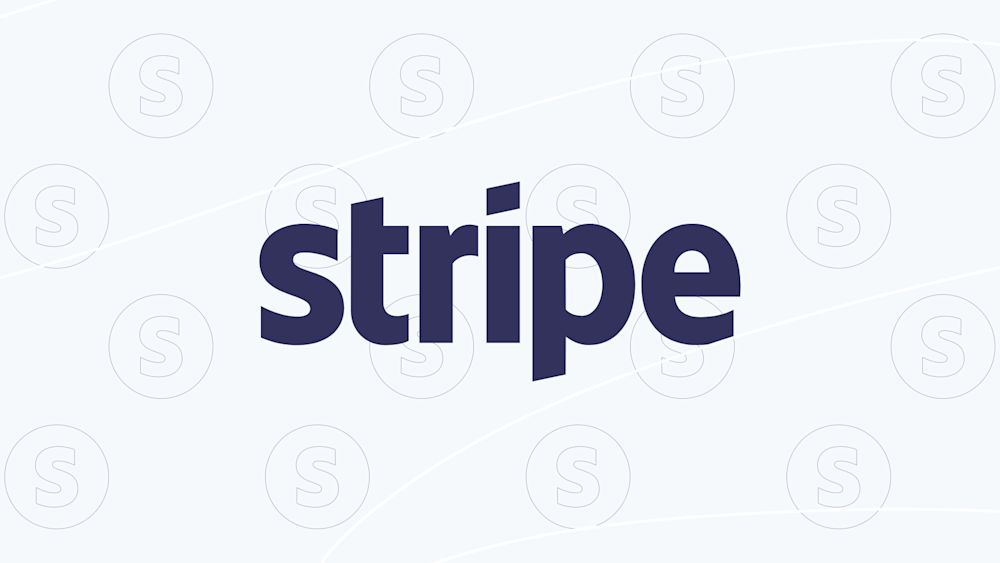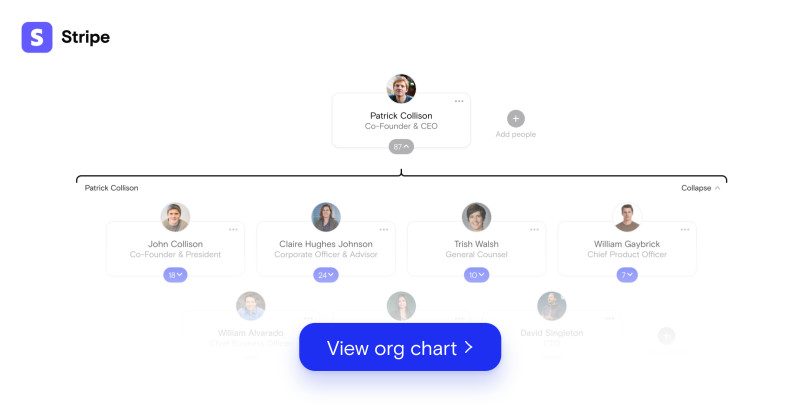How Stripe's 'Anti-Hierarchy' is Leading the Company Into its Next Chapter
Stripe is one of the highest-valued companies in the world, estimated to be worth a cool $95 billion. The payment processing upstart has gotten to where it is partially by its philosophy of "anti-hierarchy," meaning there are no official job titles for employees. Check out how this translates into an org chart for over 4,000 employees.

Stripe is one of the most valuable U.S. startups — and it’s been rumored to go public by the end of 2021 or early 2022. It’s considered to be one of Silicon Valley’s more anticipated listings, and interest is growing for its inevitable public debut.
The payment processing platform that describes itself as “building economic infrastructure for the internet” raised a $600 million Series H in March 2021, bringing the total amount of capital the startup has raised since its 2010 founding to $2.2 billion. At the time, the company said it would use the influx of cash to invest in its European operations and Dublin headquarters. The most recent funding round placed Stripe’s valuation at $95 billion, making it one of the most valuable private startups in the world — right up there with TikTok parent ByteDance and Elon Musk’s SpaceX.
Stripe took its first steps toward a direct listing back in July, when it hired a law firm to advise on legal proceedings on early-stage listing preparations.
Stripe is now gearing up for its second decade of growth. If it goes public in the coming months, it will mark a new era for it as a company. Check out how Stripe organizes its people through a culture of responsibility and the leaders at the very top preparing for this next era.
Stripe’s organizational philosophy is that titles don’t matter. “It’s about what you do, not what you’re called,” is written on the company’s jobs page. Dual headquartered in San Francisco and Dublin, it has 12 more offices around the globe and more than 4,000 employees.
Stripe boasts that its interns have run business units and account managers have started publishing arms, based on the principle that prior experience isn’t the defining factor of what makes someone skilled. Because of this highly democratic way of thinking, career progression is private between an employee and their manager based on the skills they can perform.
Much of this stems from the philosophy of its two co-founders, Patrick and John Collison. The two brothers were born in Dromineer, Ireland and had equally impressive ways of showing technical genius at an early age. Patrick, the eldest of the two, was awarded the 41st Young Scientist of the Year award for his coding language Croma, a new dialect for the programming language LISP, when he was 16. He finished high school early after getting accepted to MIT for an SAT he completed when he was 13.
Younger brother John used his transition year in school to help Patrick launch their first startup in the U.S. when they were 17 and 15, respectively. The startup was called Auctomatic, and it was a SaaS platform for sellers on eBay to track inventory and traffic. The brothers pitched it as “The Hitchhiker's Guide to the Galaxy on a Phone.” They sold Auctomatic in 2011, went back to college and then dropped out again in 2010 to start working on Stripe.

While disregard for age and experience in the workforce is embedded into Stripe’s culture up to the very top, there is a coherent and clear leadership team that emerges at the highest operating levels of the company.
One of the most public-facing leaders at Stripe is Claire Hughes Johnson. She spent more than a decade at Google leading the business teams for Gmail, Google Wallet and Google Apps before joining the fintech upstart in 2014. Her role in the org chart is officially Corporate Officer & Advisor, yet Hughes Johnson also functions as its COO. She’s been tasked with planning and optimizing all of the teams and business functions at Stripe, with the help of some of her direct reports which include Carrie Simmonds, the Head of Organizational Development, and Carmel Gavin, its Chief People Officer.

Hughes Johnson has described the culture inside the company as “anti-hierarchy,” meaning that employees should not expect a manager watching over them at all times. While this gives Stripe employees much more freedom to do tasks at hand, it also carries over a culture of responsibility and accountability.
Out of all the teams working on title-less philosophy, Stripe’s engineering team is a particularly interesting one to watch. New teams at the company emerge often and with the lack of job titles, many job responsibilities also seem to be more flexible under the technical team.
Led by CTO David Singleton, the engineering team covers traditional development and programming at the app but also has tacked on new emerging roles, like a newly-assembled cryptocurrency team. It’s not the first time Stripe has embraced crypto. In 2014, it became the first major payments company to support Bitcoin, but in the intervening years has winded down support for it. New interest and fresh investment into the cryptocurrency space has rejuvenated the team once again at Stripe, led by Guillaume Poncin, who was previously Stripe’s head of engineering.
Another signal that Stripe is starting to take crypto more seriously is the recent addition of Matt Huang to its board of directors. Huang is a former partner at Sequoia Capital and has spent a bulk of his career investing in early-stage startups. As an angel investor, he’s invested in unicorn companies like ByteDance and Instacart. He’s also well-versed in crypto investment, and he will be directly advising Poncin's team on exploring new product avenues in crypto for Stripe.

All eyes still remain on if Stripe ends up going public, which means Chief Financial Officer Dhivya Suryadevara will have a lot of work on her plate to get the company’s financials in order. Suryadevara previously worked as CFO at General Motors, where her departure for Stripe in 2020 rocked Wall Street as one of the largest moves from the auto industry to tech.
The company has had a relatively modest hiring push, clocking in at 4,000 employees. Given its supersized valuation, it will be curious to see what the company decides to do next.
Create your own free org chart today!
Show off your great team with a public org chart. Build a culture of recognition, get more exposure, attract new customers, and highlight existing talent to attract more great talent. Click here to get started for free today.






